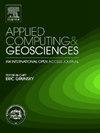Developing ground motion prediction models for West Java: A machine learning approach to support Indonesia's earthquake early warning system
IF 3.2
Q2 COMPUTER SCIENCE, INTERDISCIPLINARY APPLICATIONS
引用次数: 0
Abstract
Indonesia, one of the most earthquake-prone countries in the world, is currently developing an Earthquake Early Warning (EEW) system. A key component of this system, the Regional EEW, relies on Ground Motion Prediction models (GMPMs) to issue end-user alerts. However, in West Java, one of the pilot regions for this project, there is a lack of region-specific GMPMs essential for accurate early warnings. Traditionally, GMPMs are developed using linear regression based on complex, predefined mathematical equations and coefficients. However, Machine learning offers the advantages of bypassing the need for predefined equations and effectively capturing the nonlinear behavior present in ground motion data. To address this gap, we evaluated three machine learning algorithms (i.e. Artificial Neural Network [ANN], Gradient Boosting [GB], and Random Forest [RF]) to develop GMPMs for three tectonic categories: shallow-crustal, interface, and intraslab. These models were used to predict Peak Ground Acceleration (PGA) in West Java, utilizing 3116 strong ground motion records from 365 earthquakes with moment magnitude ranging from 2.4 to 7 and epicentral distance between 5.5 and 867 km, recorded since 2010. Our results show that The Gradient Boosting model outperformed the others across all three tectonic categories, with the lowest Mean Squared Error values (0.94, 0.60, 0.65), and Standard Deviation of Residuals (0.97, 0.77, 0.80), as well as the highest Pearson correlation coefficient-value (0.83, 0.88, 0.90) for shallow-crustal, interface, and intraslab events, respectively, demonstrating strong accuracy in predicting PGA. The model was further validated with recent earthquake data and from 2024 showing good agreement and confirming its robustness. Epicentral Distance and Moment Magnitude were the most influential in predicting PGA among the six explanatory variables used in this study. These findings highlight the potential of machine learning models to improve the accuracy of ground-shaking predictions, contributing to the success of Indonesia's Earthquake Early Warning System (EEWS).
开发西爪哇地震动预测模型:支持印尼地震预警系统的机器学习方法
印度尼西亚是世界上最容易发生地震的国家之一,目前正在开发一个地震预警系统。该系统的一个关键组成部分,区域EEW,依赖于地面运动预测模型(GMPMs)来发布最终用户警报。然而,在该项目的试点地区之一西爪哇,缺乏对准确预警至关重要的区域特定的gmpm。传统上,gmpm是基于复杂的、预定义的数学方程和系数的线性回归开发的。然而,机器学习提供的优势是绕过了对预定义方程的需求,并有效地捕获了地面运动数据中存在的非线性行为。为了解决这一差距,我们评估了三种机器学习算法(即人工神经网络[ANN],梯度增强[GB]和随机森林[RF]),以开发三种构造类别的gmpm:浅地壳,界面和实验室内。这些模型用于预测西爪哇的峰值地面加速度(PGA),利用了自2010年以来记录的365次地震的3116次强地面运动记录,这些地震的矩级从2.4到7不等,震中距离在5.5到867公里之间。结果表明,梯度增强模型在三种构造类型中均优于其他模型,其均方误差值(0.94、0.60、0.65)和残差标准差(0.97、0.77、0.80)最低,Pearson相关系数值(0.83、0.88、0.90)最高,对浅地壳、界面和实验室内事件的预测具有较强的准确性。用最近的地震数据和2024年的地震数据进一步验证了该模型,显示出良好的一致性,并证实了其鲁棒性。在本研究使用的六个解释变量中,震中距离和矩震级对预测PGA影响最大。这些发现突出了机器学习模型在提高地震预测准确性方面的潜力,为印度尼西亚地震早期预警系统(EEWS)的成功做出了贡献。
本文章由计算机程序翻译,如有差异,请以英文原文为准。
求助全文
约1分钟内获得全文
求助全文
来源期刊

Applied Computing and Geosciences
Computer Science-General Computer Science
CiteScore
5.50
自引率
0.00%
发文量
23
审稿时长
5 weeks
 求助内容:
求助内容: 应助结果提醒方式:
应助结果提醒方式:


